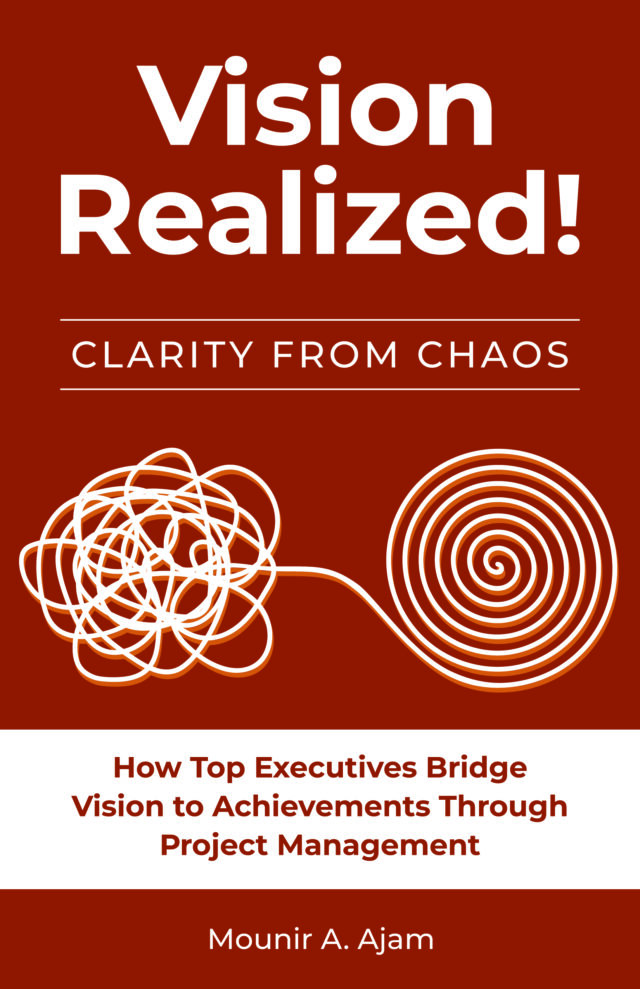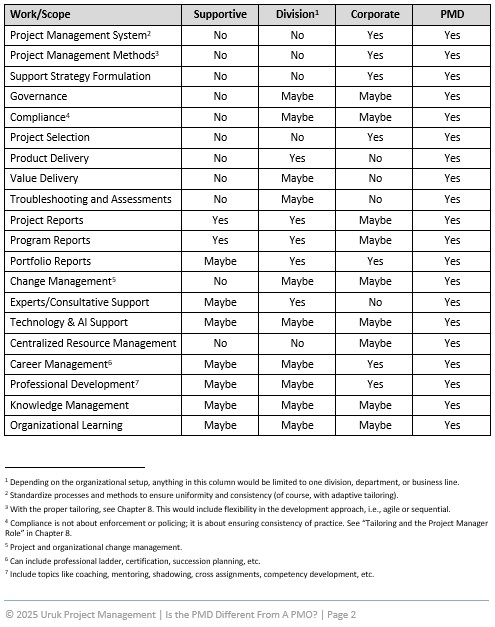This article is about going beyond the project management office and institutionalizing project management as a core organizational function.
Introduction: Project Management Offices
Project Management Offices (PMOs) have long been the default organizational solution for managing project performance. Yet, despite decades of tools, certifications, frameworks, and effort, project success rates are still stubbornly low. While well-intentioned, the traditional PMO model is often constrained—limited in scope, authority, and long-term impact. We recognize that some PMOs are excellent contributors to portfolio or project performance; however, these high-performing PMOs are possible exceptions rather than widespread practice.
The Project Management Function
At Uruk, we know that this stagnation is not a matter of poor tools or execution. The core issue is structural. Organizational excellence requires system thinking since project and portfolio excellence is not limited to project management. Accordingly, it is time to move beyond the PMO—toward an institutionalized, strategic Project Management Function (PMF) that is integrated, empowered, and foundational to value delivery. This is not a rebranded PMO. It is a structural, cultural, and leadership-level transformation of how organizations execute strategy and deliver value through project management.
This article builds on the thinking outlined in Vision Realized, which argues that impactful strategy implementation starts with recognizing project management not as a support function but as a core organizational capability.
Why the PMO Model Falls Short?
Most PMOs, while well-intended, are limited by their scope and placement within the organization. They often:
- Focus on reporting, not decision-making,
- Operate as service providers, not strategic enablers,
- Lack authority, sustainability, and organizational integration.
As a result, some PMOs suffer from:
- Short lifespans (often 2–3 years),
- Lack of executive buy-in,
- Constant pressure to “prove their value,”
- Poor influence over actual project performance.
“Executives cannot continue to pass the buck to project managers or the PMO. Strategy execution is a leadership responsibility.” — Vision Realized
The Root Cause: Misplaced Ownership
Decades of research and real-world practice show that project management failures are not just technical failures—they are organizational ones.
- Many organizations struggle not with strategy formulation but with strategy implementation.
- Most do not treat project management as a formally recognized function (unlike HR, Finance, or IT).
- As a result, there is no consistent system, method, or structure for managing portfolios, programs, projects, or transformation efforts.
This misalignment results in wasted capital, missed opportunities, and broken trust in project delivery.
The Case for a Project Management Division (PMD)
What’s needed is not a “better PMO” and the associated stigma and search for identity but a transformation in mindset and structure.
Uruk proposes formally establishing a Project Management Division (PMD): A strategic organizational unit integrating project, program, product, and portfolio management (the 4PMs) under a single, enterprise-wide function. A PMD will oversee and nurture the project management function and spread a project management culture as “indispensable for organizational success.”
A Project Management Division is:
- An executive-level division or organizational unit (not just an office),
- Mandated to link strategy with execution,
- Responsible for building and maintaining the Organizational Project Management System (OPMS),
- Capable of leading projects from ideation through benefits realization,
- A center of excellence for governance, methodology, and value delivery,
- Led by an executive, a chief project officer (CPO).
“Without formally recognizing project management as a core function, we will continue to see failure as the norm and success as the exception.” — Vision Realized
Benefits of Institutionalizing Project Management
- Achieve consistency across all projects by applying standardized, adaptable systems and methods.
- Improve governance and decision-making by centralizing authority for project-related activities.
- Bridge the gap between strategy and execution by acting as a direct conduit for change initiatives.
- Foster organizational learning by capturing lessons, sharing knowledge, and maturing practices.
- Develop internal capabilities by investing in career pathways, professional development, and structured support for project talent.
- Enable business agility through end-to-end visibility and integrated value delivery across departments and functions.
These outcomes are not the result of templates or compliance—they result from recognizing project management as a strategic organizational function.
Artificial Intelligence and PMD
Today, one of the hottest topics in business and project management is Artificial Intelligence (AI), including Machine Learning (ML). For AI and ML to be effective, they must have data: cleaned, processed, and organized data collected consistently using a common language and fields.
Professor Paul Boudreau[1] states that about 60-80% of the effort in AI and ML transformation is spent on data and ensuring that the data is suitable for recognition and prediction models. Accordingly, many benefits of institutionalizing project management—such as standardization—would be vital for AI transformation and embracing the future. In other words, we do not embark on an AI transformation journey unless we build a robust infrastructure—organizational project management system and methods.
What Makes a PMD Different?
The comparison table below illustrates how a PMD differs from other project management structures, especially Supportive, Division-based, or Corporate PMOs. We extracted this table from Vision Realized. If you have a PMO, you can replace one of the three middle columns with your PMO mandate and identify your organizational gaps.
 As shown above, the PMD is the only structure consistently supporting the full breadth of project management needs—governance, delivery, integration, learning, and transformation—across the enterprise. It is not constrained to one division or a short-term mandate. It is built to last.
As shown above, the PMD is the only structure consistently supporting the full breadth of project management needs—governance, delivery, integration, learning, and transformation—across the enterprise. It is not constrained to one division or a short-term mandate. It is built to last.
What Executives Must Do?
A transformation of this magnitude cannot emerge from the bottom up alone. It must be sponsored—and led—from the top.
To institutionalize a PMD, executives and board directors must:
- Recognize project management as a strategic enabler, not just an operational tool.
- Establish a formal project management division with defined mandates, budget, and authority.
- Invest in systems and maturity—including methodology, governance, and talent development.
- Measure success across four dimensions: technical, delivery, project, and objectives (as proposed in the UrukPM Four Dimensions of Project Success model).
- Bridge strategy with action—because vision without execution is hallucination.
Final Thought
Don’t Just Manage Projects—Lead Through Them
It’s time for organizations to stop treating project management as an afterthought or administrative layer. In today’s complex and fast-moving environment, project management is the mechanism through which strategy becomes reality.
If you’re serious about delivering results—if your organization wants to stop repeating the same mistakes—it’s time to rethink the role of project management altogether.
Move beyond the PMO.
Establish the Project Management Division.
Realize your vision.
📘 Learn more in Vision Realized
🔗 Explore the Uruk Framework
Look for our upcoming guide to implement this vision: Successful Transformation
📩 Ready to elevate your organization’s performance? Contact us
[1] In his book Applying Artificial Intelligence to Project Management.



